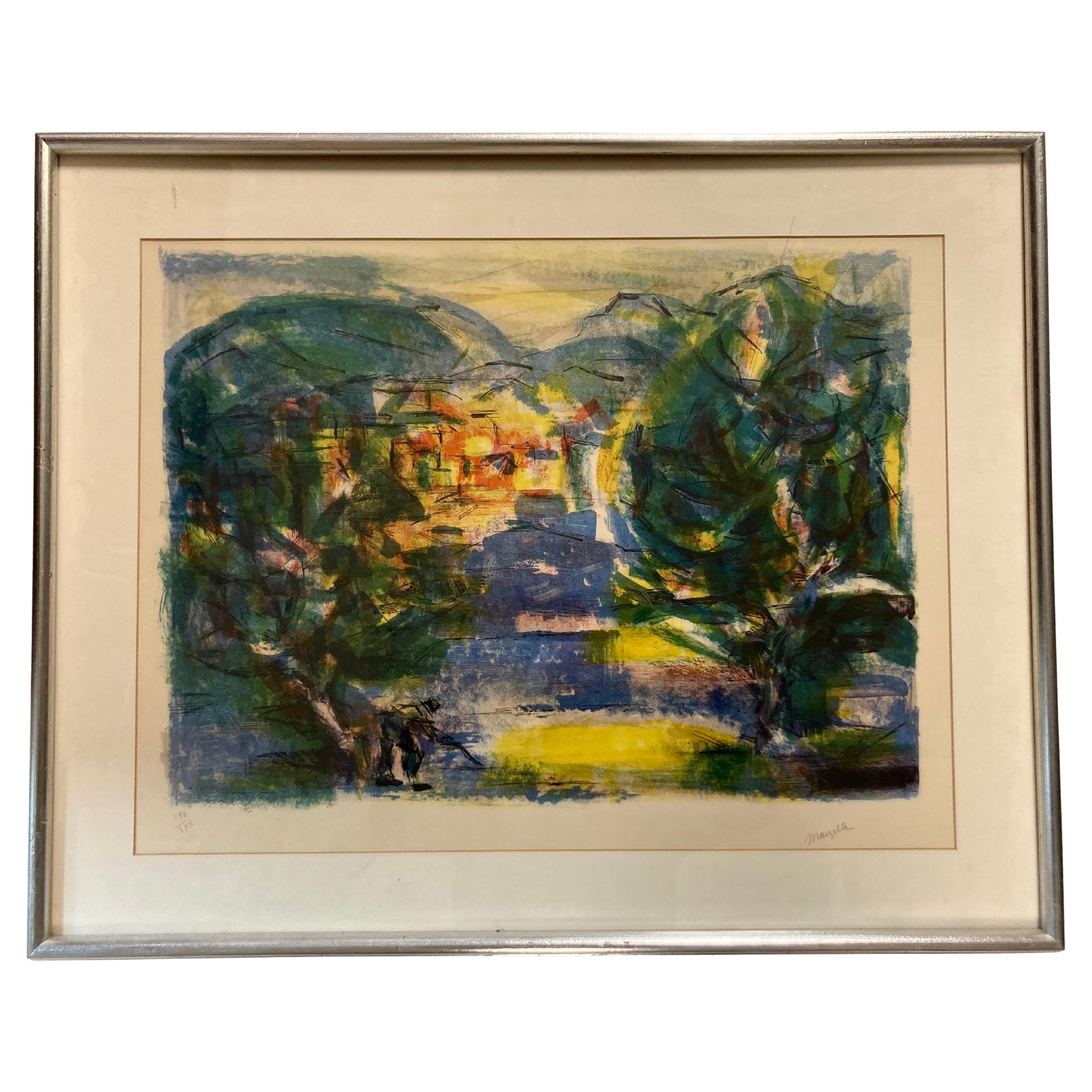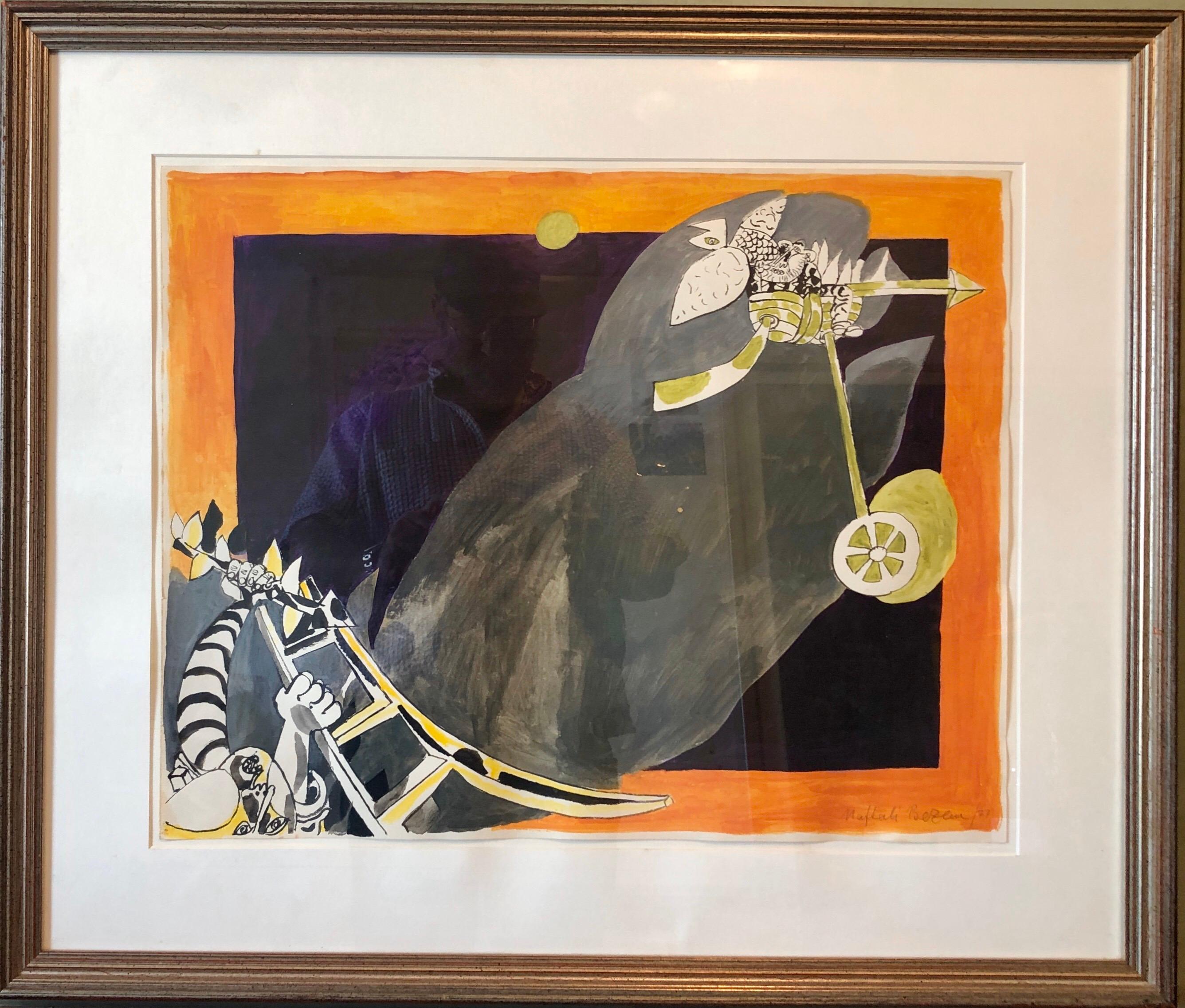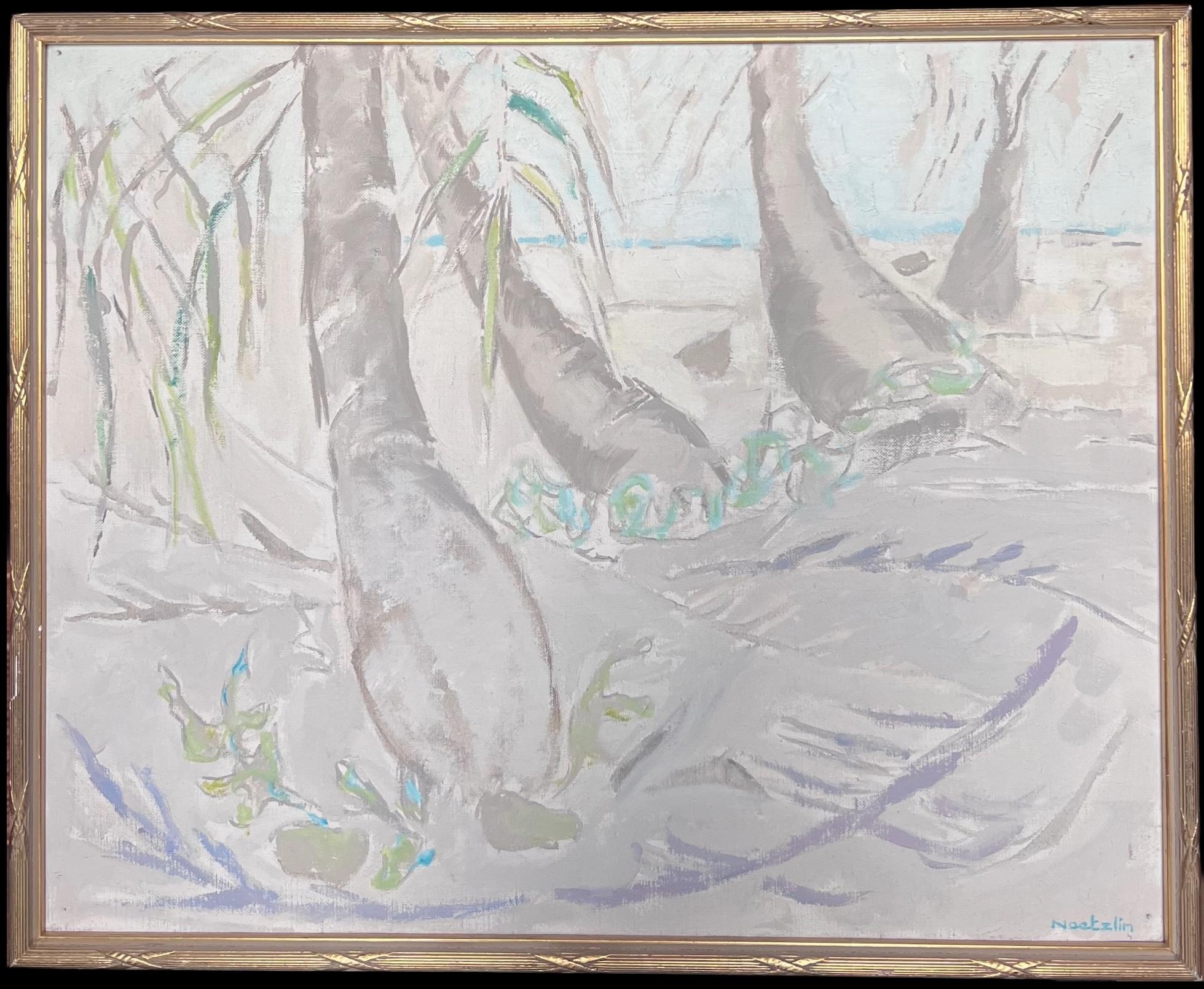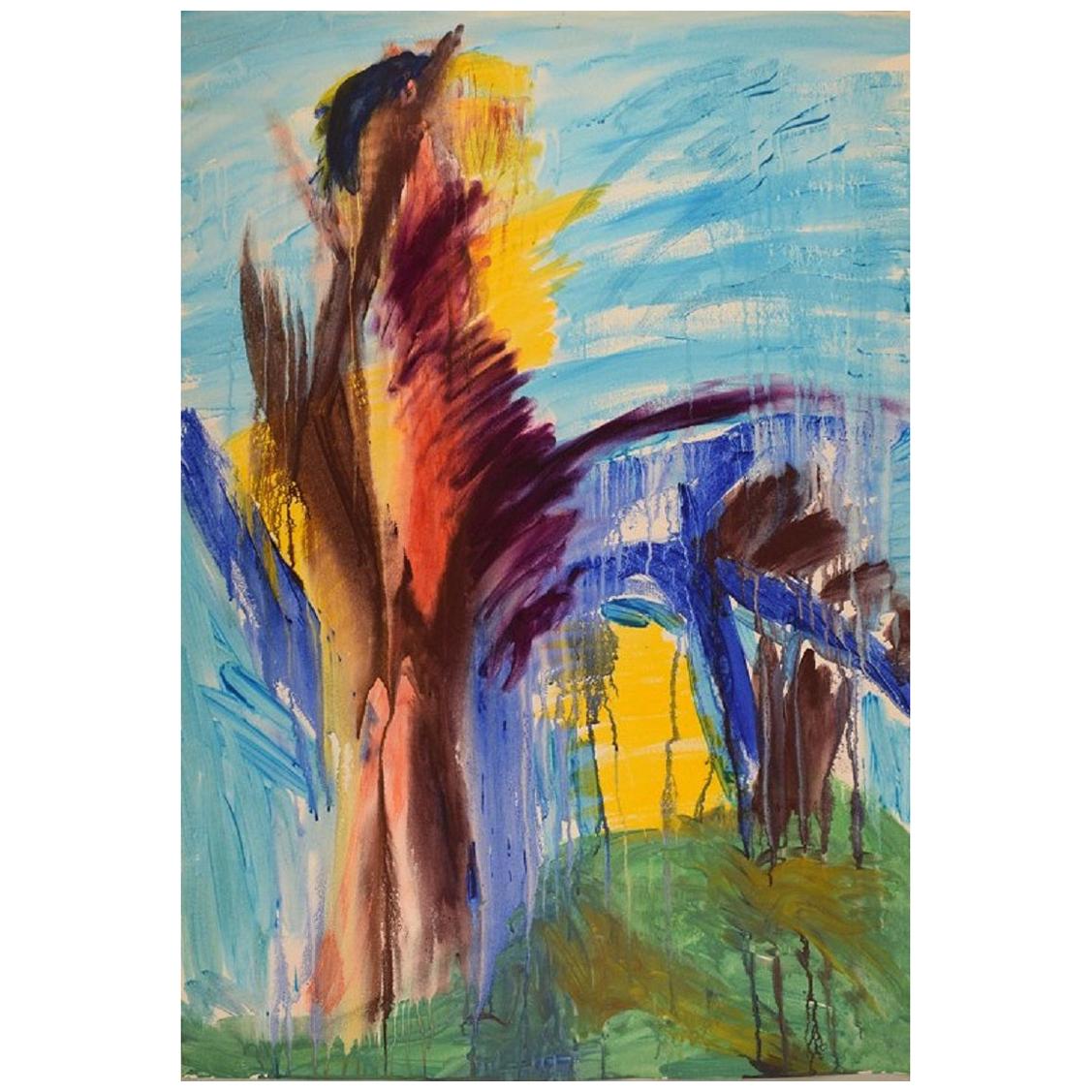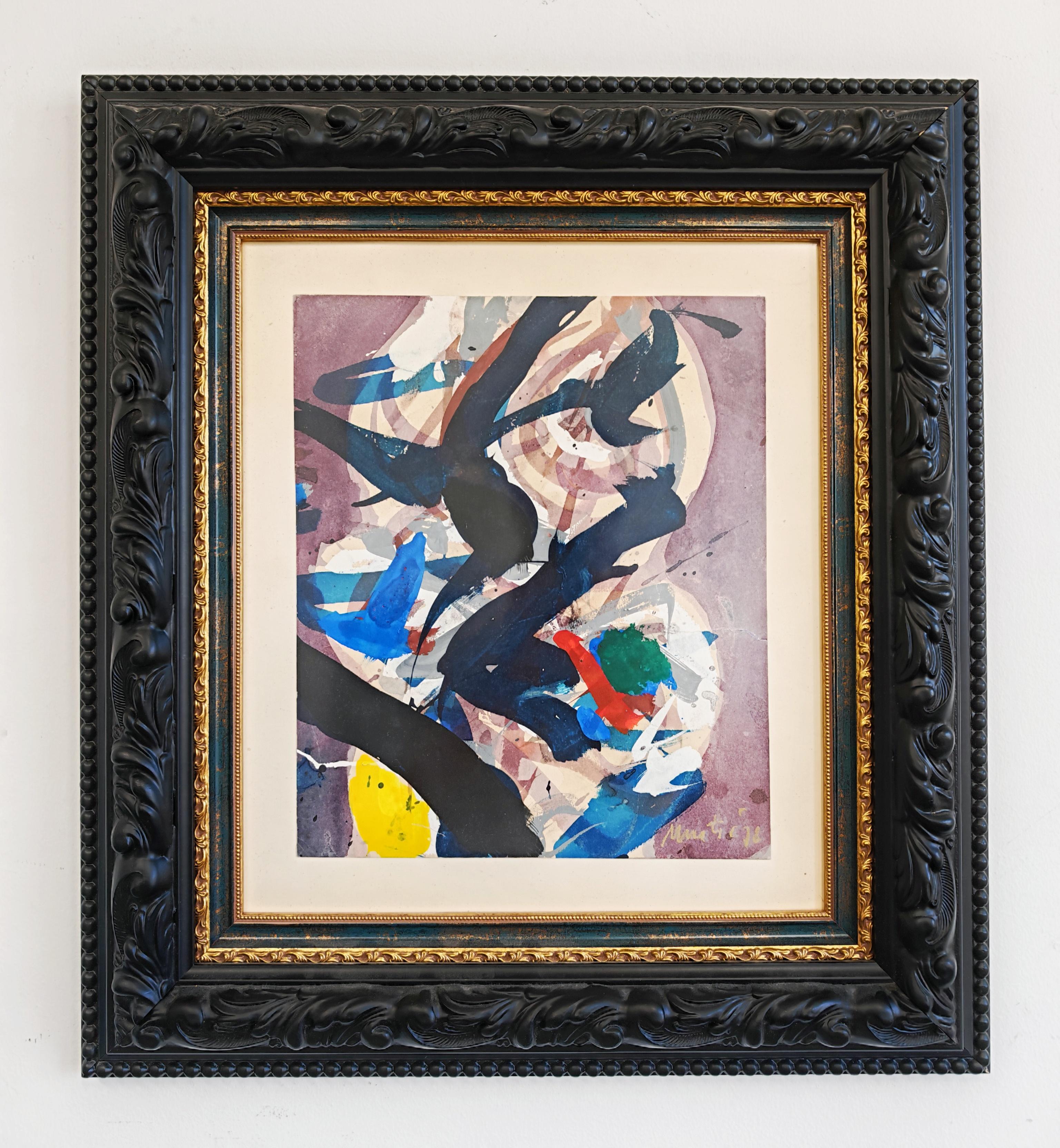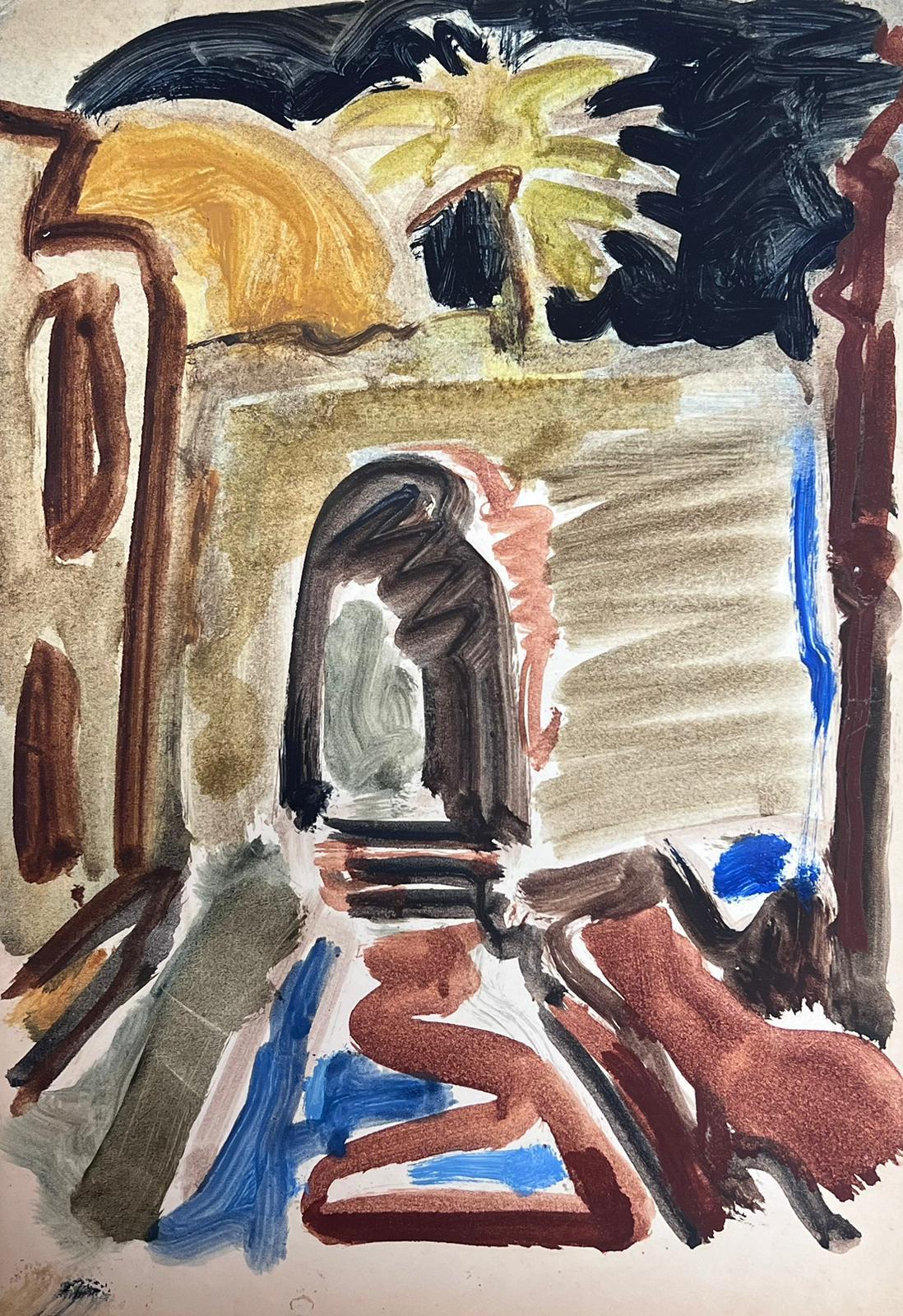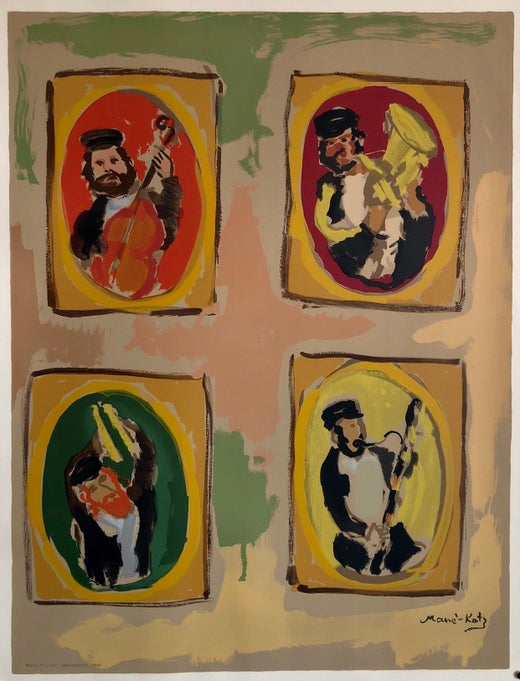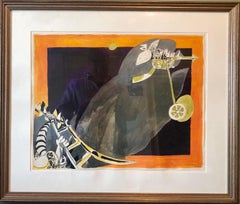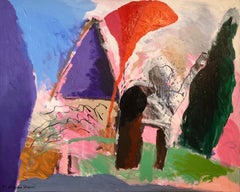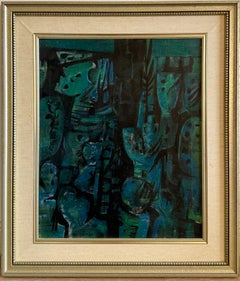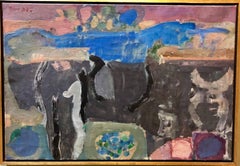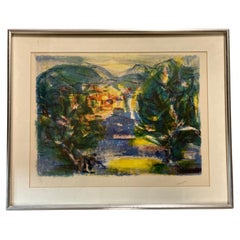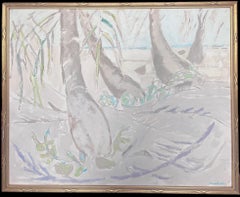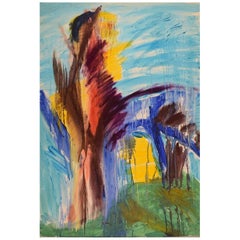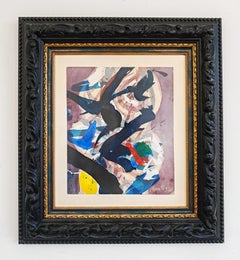Items Similar to Abstract Landscape with Palm Tree Judaica Gouache Painting
Want more images or videos?
Request additional images or videos from the seller
1 of 9
Mane KatzAbstract Landscape with Palm Tree Judaica Gouache Painting
$2,600
£1,981.62
€2,265.12
CA$3,658.04
A$4,007.26
CHF 2,109.27
MX$47,827.76
NOK 26,887.83
SEK 24,579.53
DKK 16,920.03
About the Item
Mane-Katz (1894-1962) Landscape with palm tree. Gouache on paper, signed lower right. Dimensions: (Frame) H 37.5" x W 31", (Sight) H 24.5" x W 18"
Emmanuel Mané-Katz (Hebrew:מאנה כץ), born Mane Leyzerovich Kats (1894–1962), was a Litvak painter born in Kremenchuk, Ukraine, best known for his depictions of the Jewish shtetl in Eastern Europe.
Mane-Katz moved to Paris at the age of 19 to study art, although his father wanted him to be a rabbi. During the First World War he returned to Russia, at first working and exhibiting in Petrograd; following the October revolution, he traveled back to Kremenchuk, where he taught art. In 1921, due to the ongoing fighting in his hometown during the civil war, he moved once again to Paris. There he became friends with Pablo Picasso and other important artists, and was affiliated with the art movement known as the School of Paris; together with other outstanding Jewish artists of that milieu, he is sometimes considered to be part of a group referred to specifically as the Jewish School of Paris. Includes painters Jankel Adler, Arbit Blatas, Marc Chagall, Jacques Chapiro, Michel Kikoine, Pinchus Kremegne, Sigmund Menkees, Jules Pascin, Issachar Ryback, Jacques Lipchitz,Chana Orloff, and Ossip Zadkine. Ecole de Paris
In 1931, Mane-Katz's painting The Wailing Wall was awarded a gold medal at the Paris World's Fair. Early on, his style was classical and somber, but his palette changed in later years to bright, primary colors, with an emphasis on Jewish themes. His oils feature Hassidic characters, rabbis, Jewish musicians, beggars, yeshiva students and scenes from the East European shtetl.
Mane-Katz made his first trip to Mandate Palestine in 1928, and thereafter visited the country annually. He said his actual home was Paris, but his spiritual home was Eretz Yisrael, the Land of Israel.
Mane-Katz left his paintings and extensive personal collection of Jewish ritual art to the city of Haifa, Israel. Four years before his death, the mayor of Haifa, Abba Hushi, provided him with a building on Mt. Carmel to house his work, which became the Mane-Katz Museum. The exhibit includes Mane-Katz's oils, showing a progressive change in style over the years, a signed portrait of the artist by Picasso dated 1932 and a large collection of Jewish ritual objects.
In 1953, Mane-Katz donated eight of his paintings to the Glicenstein Museum in Safed, whose artists quarter attracted leading Israeli artists in the 1950s and 1960s, and housed some of the country's most important galleries.
- Creator:Mane Katz (1894 - 1962, American)
- Dimensions:Height: 37.5 in (95.25 cm)Width: 31 in (78.74 cm)
- Medium:
- Movement & Style:
- Period:
- Condition:Measurements include frame.
- Gallery Location:Surfside, FL
- Reference Number:1stDibs: LU38212753082
Mane Katz
Emmanuel Mané-Katz was a prominent modernist in Paris at the beginning of the twentieth century. He studied at the Beaux Arts Academy in Kyiv, Ukraine. After his extensive travels through Europe (catalyzed by World War I), Mané-Katz eventually settled in Paris, where he befriended Pablo Picasso and other fellow modernists. Many of Mané-Katz’s paintings have deep religious significance and origins, often picturing rabbis, Jewish students, and other Hassidic personas. Such paintings of Jewish folklore are often compared to Marc Chagall’s religiously-influenced art practice. He continued his travels to places like Israel, Palestine, Brazil, and Japan throughout the rest of his life, maintaining adherence to religious themes and portraiture in his art. The Mané-Katz Museum is located on Mt. Carmel in Haifa, Israel, and his work is part of the permanent collections of the Tate, the MOMA, and the Museum of Art at Ein Harod in Israel. After his death, Mané-Katz donated much of his art to Haifa, Israel, where his home was. His participation in the School of Paris alongside modernists like Picasso, Chagall, and Soutine solidified him as an influential modernist painter in the early twentieth century.
About the Seller
4.9
Platinum Seller
Premium sellers with a 4.7+ rating and 24-hour response times
Established in 1995
1stDibs seller since 2014
1,846 sales on 1stDibs
Typical response time: 1 hour
- ShippingRetrieving quote...Shipping from: Surfside, FL
- Return Policy
More From This Seller
View AllRare German Israeli Surrealist Judaica Abstract Gouache Watercolor Painting
By Naftali Bezem
Located in Surfside, FL
A Surrealist Judaica scene of a bearded man (Rabbi) in a boat with Shabbat candlesticks.
Sight size: 17.75" x 22.5". Overall size with frame: 26.5" x31.5"
Naftali Bezem (Hebrew: נ...
Category
1970s Modern Abstract Paintings
Materials
Ink, Watercolor, Gouache
Large Original Abstract Colorful Oil Painting Israeli Kibbutz Landscape Shemi
By Calman Shemi
Located in Surfside, FL
Life in Nature
Canvas measures 31.5 X 39.5
(I believe this is oil it might also be acrylic.)
Hand signed recto and signed and titled verso.
Calman Shemi, sculptor and painter, was ...
Category
1980s Abstract Geometric Abstract Paintings
Materials
Canvas, Oil
Israeli Expressionist Oil Painting Yosl Bergner Modernist Abstract Composition
By Yosl Bergner
Located in Surfside, FL
Yosl Bergner (Israeli 1920-2017)
Untitled, 1961
Oil on canvas
Dimensions: 19 5/8 x 24 3/8 in. Framed, 32.25 x 28 inches
Hand signed in Hebrew and dated lower left
Bears gallery stamp...
Category
1960s Modern Figurative Prints
Materials
Canvas, Oil
Lyrical Abstract Israeli Expressionist Oil Painting
By Hanna Ben Dov
Located in Surfside, FL
Hanna Ben Dov is an Israeli abstract painter who was born in Jerusalem in 1919 and died in Paris in 2008.
Ben Dov's father, Yacov Ben-Dov, was a famous Israeli photographer who founded the photography department in the Bezalel Academy of Art and Design in 1910. Hannah herself attended Bezalel during the 1940s, and later continued to Camberwell College of Arts in London. After the completion of her formal education she moved to Paris, where she exhibited for the first time in 1948 and has been living and working there since, as a part of the local abstract artists school. She took part in the first French Biennale of 1951, that was held in Menton.
Collections
Her paintings can be found in several collections, including the French State Collection, the Tel Aviv Museum of Art collection, the Bezalel National Museum collection in Jerusalem and the Rockefeller Museum collection in New York.
Ben Dov resided for her last two years at the Maison Des Artistes Home in Nogent-Sur-Marne, France, just outside Paris.
Exhibitions
Gallery97 Tel Aviv Paintings...
Category
20th Century Modern Landscape Paintings
Materials
Canvas, Oil
Modernist Landscape 'Portugal' Watercolor Painting
By Maurice Freed
Located in Surfside, FL
Genre: Modern
Subject: Landscape
Medium: watercolor
Surface: Paper
Country: United States
Dimensions w/Frame: 23.75" x 30.75"
Maurice Freed (1911‑1981), a native of Pottsville, PA ...
Category
Mid-20th Century Modern Landscape Paintings
Materials
Watercolor
Israeli Modern Pop Art Photo Silkscreen Serigraph Palm Trees Kadishman
By Menashe Kadishman
Located in Surfside, FL
Menashe Kadishman was born in Tel-Aviv in 1932. He is a Graduate of St. Martin's School of Art, University of London Studies with Anthony Caro, Reg Butler. From 1947 to 1950, Kadish...
Category
1970s Abstract Geometric Landscape Prints
Materials
Etching, Aquatint, Lithograph
You May Also Like
Vibrant Signed Mid Century Lithograph of an Abstract Landscape
Located in Bridgeport, CT
A vibrant Period Mid Century Lithograph of a colorful and Abstract Lithograph. The image with trees in the foreground and central structures backed by mountains in the distance are d...
Category
Mid-20th Century Mid-Century Modern Prints
Materials
Acrylic, Wood, Paper
Modernist 20th Century French Oil Painting Trees in Tropical Coastal Landscape
Located in Cirencester, Gloucestershire
Trees
by Laure Noetzin-Azam (French 1929-2024) pupil of André LHOTE
signed oil on canvas, framed
framed: 13.75 x 17 inches
canvas: 13 x 16 inches
Provenance: all the paintings we hav...
Category
Mid-20th Century Cubist Landscape Paintings
Materials
Oil
Ivy Lysdal, Gouache on Cardboard, Abstract Modernist Painting, Late 20th C
Located in København, Copenhagen
Ivy Lysdal, b 1937. Danish ceramist and painter.
Gouache on cardboard.
Abstract modernist painting. Colorful palette.
Late 20th century.
Measures: 100 x 70 cm.
Provenance: Th...
Category
Late 20th Century Danish Modern Paintings
Materials
Other
Abstract painting by Edo Murtić, aquarelle, Yugoslavia 1978
Located in Beograd, RS
In this listing you will find a beautiful painting by Yugoslav artist Edo Murtic. The painting is done in aquarelle technique, it is an abstract image in beautiful tones of purple, b...
Category
Vintage 1970s Croatian Post-Modern Paintings
Materials
Wood, Paper
20th Century German Modernist Oil Painting - Expressionist Town with Palm Tree
Located in Cirencester, Gloucestershire
Artist: Elisabeth Hahn (German 1924-2021),
Elisabeth Hahn was born in Dortmund, Germany, where she began her artistic studies. In 1953, she moved to Paris. She continued her studie...
Category
20th Century Modern Abstract Paintings
Materials
Oil
Abstract Expressionist Acrylic and Oil on Paper
Located in Cotignac, FR
Abstract Expressionist oil and acrylic on paper by Dutch artist Joep Goeting. Signed and dated 1972 to the bottom left and presented under glass in a gilt wooden frame.
An early and...
Category
Late 20th Century Neo-Expressionist Abstract Paintings
Materials
Paper, Oil, Acrylic
More Ways To Browse
Judaica Paintings
Picasso A Trip To Paris
Modern Tree Painting
Pascin Jules
Modern Judaica Painting
Jewish Shtetl
Ecole De Paris Painting
Adler Jankel
Orloff Chana
Michel Kikoine
The Wailing Wall
Abstract Palm Tree Painting
Chapiro Jacques
Modern Paintings Palm Trees
1950s Abstract Oil Paintings
Adrian Artist
Alexander James
Cairo Painting
